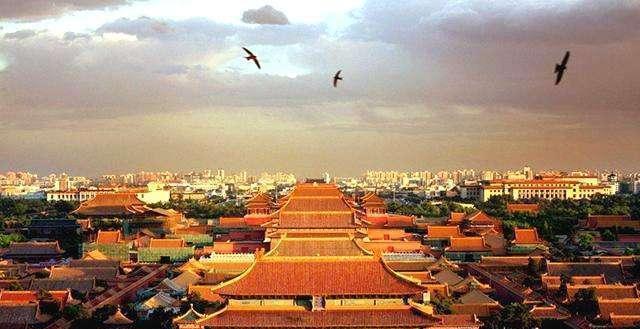There is history to study, there is evidence to rely on, is an important part of the study of historical authenticity, how was the thousand-year-old feudal dynasty identified as real? With the historical records, the evidence of the proof, over the past thousand years, the ancestors left too many traces of civilization, from the bronzes of the Shang and Zhou Dynasties to the blue and white porcelain of the Qing Dynasty, etc., the cultural relics left behind are important evidence to witness a period of history, and it is with these historical evidences that China's thousand-year history is deeply remembered by the world. Among the world's four ancient civilizations, only China's history has left so many "witnesses", which is a precious memory that belongs only to Chinese, and it is also an excellent culture that only belongs to China.

What is history? The past events can be called history, there is so much history, the text can not be completely recorded, so most of the history recorded in the history books are important people, events, in the society has not much achievement or status is not high ordinary people can not be recorded in the annals of history. During the Qing Dynasty, there was a governing body called the Cabinet Treasury, which was in charge of archives and recorded one thing after another that happened during the Qing Dynasty. From the war to the examination papers of the royal children, the cabinet library has a collection. It is not difficult to completely record these big things and small things, after all, there are many eunuchs and maids in the palace, but it is very difficult to completely preserve so many things.
Although the Cabinet Treasury is quite large, it is not large enough to hold the entire history of the Qing Dynasty, so the Cabinet Treasury needs to be repaired every three to five minutes, and it is very troublesome to manage. In the last years of the Qing Dynasty, the Cabinet Treasury was even more disliked by officials, who even believed that the Cabinet Treasury did not need to exist, and they wanted to burn all the archives at once. However, this idea was quickly opposed, but the emperor also began to order that old materials of a certain year be burned to relieve the pressure on the cabinet treasury. Later, the Qing government fell, and the Beiyang government took over the cabinet treasury, and these materials also became a burden for the Beiyang government.
At that time, the Beiyang government was in financial difficulties, so these files were divided into 8,000 sacks, a total of 150,000 jin, and the cultural relics in these sacks should have been very precious, but because of the government's financial difficulties, they were sold as "garbage". At that time, these 8,000 bags of materials only sold for 4,000 silver dollars, which is equivalent to two bags of materials only need one silver dollar, and the cultural relics dealers who purchased these materials originally bought this batch of palace goods with the idea of "treasure hunting", but they were disappointed, and the cultural relics dealers were not willing to ask for this batch of materials, so they sold them to the bookstore. At that time, 1 silver dollar could be exchanged for 20 kilograms of rice, which meant that a generation of ancient books could be exchanged for 10 kilograms of rice.
Fortunately, before the bookstore was ready to reuse the paper to make paper, these materials were known to the Qing Dynasty widow Luo Zhenyu, who spent 12,000 oceans to buy this pile of archives, and later transferred it to Li Shengxuan of the embassy in 1924, and in 1929, Li Shengxuan transferred this batch of archives to the Central Institute of History, and this batch of archives eventually returned to the country and got a good ownership. Now, archaeologists in China have sorted out the archives left behind, and have also made valuable archives into books for publication, which are very important for the historical study of the Qing Dynasty.
Nowadays, this batch of archives has become a treasure of the town and the country, is a very important history book, in fact, many cultural relics in our country have suffered such a thing, that is, they are not valued, Wang Xizhi's facsimile "Shangyu Ti" has also been snubbed in the Shanghai Museum, but fortunately, in the end, experts have found it, otherwise "Shangyu Ti" will be moldy in the storage room. Wang Xizhi is a famous "book saint" in China, and now he has no surviving authentic works, this facsimile is a precious cultural relics of the Tang Dynasty period, which is very close to the authentic calligraphy works of Wang Xizhi, which has received great attention once it was discovered and has become a rare treasure of the museum and town hall.